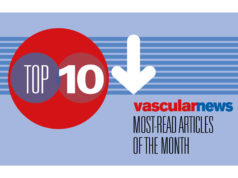
A five-year institutional population health review has revealed that there is a rising trend in the clinical and economic burden of wound care in the Tropics. Published in the International Wound Journal (IWJ), the study was conducted after two systematic reviews found just one investigation into the social and economic burden of chronic wounds on a population based in the Tropics, out of a total 47 identified.
Conducted by investigators in Singapore, the aim of the study was to evaluate the burden of wound care in a Tropic location. Writing in IWJ, first author Zhiwen J Lo (Tan Tock Seng Hospital, Singapore) and colleagues explain that data was examined from January 2013 to December 2017 at a university tertiary hospital and its affiliated primary care system of six polyclinics. “Within our data analysis, wounds were broadly classified into neuroischaemic ulcers, venous leg ulcers, pressure injuries, and surgical site infections,” they add.
Some patients were excluded from the study, such as those under the age of 21 years and patients with wounds not verified by eWounds. “Variables evaluated,” continue the authors, “include demographic details (gender, age, and ethnicity), clinical variables (Charlson Comorbidity Index [CCI] and Frailty Index), and healthcare administration and economic variables (length of stay, healthcare visit episodes, and healthcare costs).”
With CCI, “a method of categorising comorbidities of patients based on International Classification of Diseases (ICD) diagnosis codes”, each comorbidity category has an associated weight of 1–6, according to the adjusted risk of mortality or resource use, which can be compiled to predict both surgical mortality and long-term survival. Furthermore, the Frailty Index can be used to measure the health status of older individuals.
Concerning the study’s results, Lo et al emphasise a number of key findings: “Between 2013 and 2017, there were a total of 56,583 wound-related inpatient admissions for 41,461 patients, with a 95.1% increase in wound episodes (142 and 277 wound episodes per 1,000 inpatient admissions in 2013 and 2017, respectively).
“In 2017, the average length of stay for each wound episode was 17.7 days, which was 2.4 times that of an average acute admission among the 12,218 patients with 16,674 wound episodes in 2017, [and] 71.5% were more than 65 years of age with an average Charlson Comorbidity Index of 7.2.”
Investigators also underlined that within the healthcare cluster studied, gross healthcare costs for all inpatient wound episodes totalled USD$216 million within hospital care and $596,000 within primary care, while the average gross charge per wound episode was $12,967.
The breakdown of different wound types, and their clinical and economic burden, showed that in 2017, pressure injuries accounted for the largest number of inpatient episodes (n=4,981), followed in succession by surgical site infections (n=2,463), neuroischaemic ulcers (n=949) and venous leg ulcers (n=112). In terms of average stay, pressure injuries were once again the highest (18.6), followed by neuroischaemic ulcers (15.8), surgical site infections (14.9) and venous leg ulcers (13).
Results for clinical variables demonstrate that venous leg ulcers had the lowest CCI in 2017, at 5.2, compared to surgical site infections (5.9), pressure injuries (8.3) and neuroischaemic ulcers (8.4). Neuroischaemic ulcers were also found to affect the frailest patients, according to the Frailty Index.
The authors conclude that “similar to global data, there is a significant and rising trend in the clinical and economic burden of wound care in the Tropics.” In 2017, over 25% of inpatient admissions had wound-related issues, with the average length of stay 2.4 times that of an average tertiary hospital admission.
“These patients are elderly,” Lo and colleagues continue, “with multiple comorbidities and are frail. A multi-disciplinary and institutional strategy must be adopted to reduce this clinical and economic burden, such that benefits on a tripartite front, for patients, clinicians, and healthcare systems, may be achieved.”












